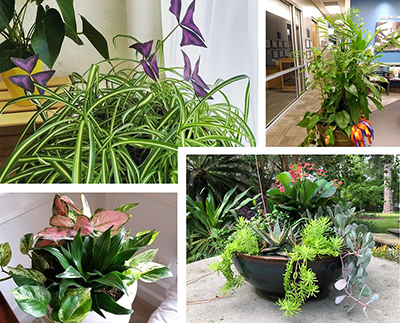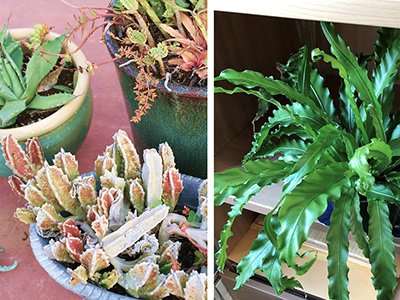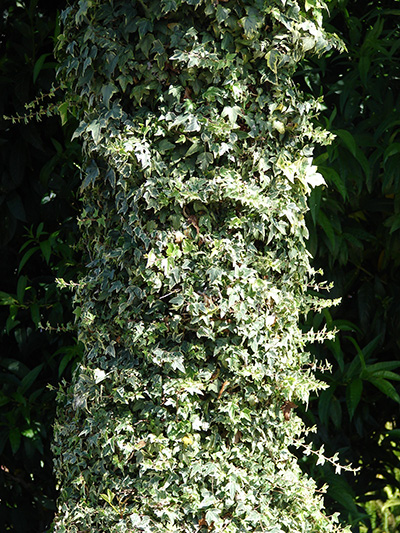Indoor Gardens
A garden is a thing of beauty, even indoors.

Today, four in five U.S. residents live in urban areas. For green thumbs living in apartments, traditional gardening may be impossible.
Thankfully, the houseplant trend is back! And for “plant parents” looking for something new, creating an indoor garden can be a fun challenge.
What is an indoor garden?
An indoor garden is a contained, garden-like landscape created from houseplants. This can easily be done by grouping plants on a table or windowsill. Still, as lovely as these arrangements are, plantings in a single container bring more interest. And, planted together, your houseplants will behave more like one cohesive garden.
Like outdoor gardens, indoor gardens are artistic, planned, curated groups of plants. Unlike outdoor gardens, indoor gardens are less seasonal. They thrive year-round in the climate-controlled environment inside your home. They are also smaller, making them convenient if you expect frequent moves.
And, despite their size, the joys (and challenges) of gardening are still here. As these indoor gardens mature, some plants grow and thrive. Others may, over time, need replacing. Building a thriving landscape, indoors or out, is all about getting the right plant in the right place.
Once you’ve chosen your plants, starting an indoor garden is simple:
- Find a large, shallow planter (and saucer) with good drainage
- Fill with a soil mix designed for indoor plants
- Plant two or more plants with similar light, soil, and water needs
But before you begin, carefully consider which plants belong in your indoor garden. No matter how beautiful they look together, not all plants are compatible. Mixing color, texture, and shape is an art. Mixing low- and high-light species is a mistake.
Which plants will grow in an indoor garden?
The short answer is “houseplants.” The long answer is “houseplants with similar light, water, soil, and nutrient requirements.”
Use the infographic below to find plants with similar light and moisture needs. The symbols will alert you to plants with additional considerations. These may be size, soil preferences, or invasive growth habits.
The easiest to maintain indoor gardens contain plants with compatible requirements. There are many factors that affect the success of your indoor garden. Light and water are only two of the things to consider. For more information about each environmental factor, read on.
First, consider lighting
For house plants, light is the most important factor to consider. Temperature, humidity, and fertilizer are easily adjusted. Natural light, on the other hand, is scarce in most homes.
Most plants have a very narrow range of light levels that will support healthy growth. The light that will satisfy an aloe will burn a peace lily. Likewise, the light that will keep a ZZ plant healthy will leave a fiddle-leaf languishing. For an indoor garden, choose plants with similar or flexible lighting requirements.
Terms like “low light” or “bright indirect light” can be vague and even misleading. Human eyes are so adaptable that we are poor judges of light intensity. A “bright-ish” window may be ten times brighter than the other side of the room. It’s very difficult for us to notice these differences. Our eyes adjust even as we turn our gaze.
For accurate light intensity measurements, a digital light meter is best. A phone application can help you estimate light levels. You can read more about light in our article, “How Much Light Do My Houseplants Need?”
Second, consider water

After lighting, a plant’s moisture needs are most important. These needs change based on light levels, temperature, and the size of the plant. Regular watering schedules, like “once a week,” are common but risky. These will usually over- or under-water a plant as conditions change. Root damage follows.
It is best to check the soil moisture by touching the top of the soil every couple of days. Most houseplants prefer moist soil that is watered as often as the surface soil dries. But some plants, like orchids and succulents, must dry out periodically to avoid root rot. Others, like the maidenhair fern, will decline quickly in dry soil.
This doesn’t mean an indoor garden with orchids flourishing among ferns is impossible. The pot of the “drier” plant can be partially submerged in a “wetter” indoor garden container. Water this pot less often than you water the entire container. This is a method used in nurseries and florist shops to make short-term houseplant groupings.
Also consider soil and nutrients
Succulents, orchids, ferns, bromeliads, and some other houseplant species do best in specialized soil mixes. Orchids, for example, prefer well-drained, aerated soils, and periods of dryness between watering. These won’t do well in the rich, peat-mix soils recommended for ferns.
Another factor to take into consideration is nutrient requirements. Most houseplants thrive on occasional applications of a weak, balanced fertilizer. Others have higher, lower, or specialized fertilizer needs. One such species is African violets. To bloom, these require high phosphorous applications.
Final considerations

Some plants grow very slowly and remain low to the ground, like pothos. Others, like fiddle-leaf fig, grow so tall that they may one day need more space. Take size into consideration if you want an indoor garden that will last for years.
We never recommend moving houseplants to a landscape location. Most of the plants in your home are non-native. These exotic houseplants can become monsters when planted out of doors. English ivy, non-native sword fern, and even pothos are all invasive exotics in Florida.
We also recommend avoiding houseplants found to be invasive in your area. Some are so invasive nurseries are prohibited from selling them. You can check your plant’s invasive assessment at the UF/IFAS Assessment of Non-native Plants in Florida’s Natural Areas.
Finally, yes, indoor gardens require “potting up” just like individual houseplants. For this, and other care instructions, see our article, “Caring for Houseplants.”
For more information about gardening, indoors and out, contact your county Extension office.
